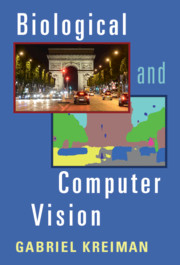
-
Select format
-
- Publisher:
- Cambridge University Press
- Publication date:
- 05 February 2021
- 04 February 2021
- ISBN:
- 9781108649995
- 9781108483438
- 9781108705004
- Dimensions:
- (244 x 170 mm)
- Weight & Pages:
- 0.64kg, 274 Pages
- Dimensions:
- (244 x 170 mm)
- Weight & Pages:
- 0.5kg, 274 Pages
- Subjects:
- Life Sciences, Neurosciences, Psychology, Cognition
You may already have access via personal or institutional login- Subjects:
- Life Sciences, Neurosciences, Psychology, Cognition
Book description
Imagine a world where machines can see and understand the world the way humans do. Rapid progress in artificial intelligence has led to smartphones that recognize faces, cars that detect pedestrians, and algorithms that suggest diagnoses from clinical images, among many other applications. The success of computer vision is founded on a deep understanding of the neural circuits in the brain responsible for visual processing. This book introduces the neuroscientific study of neuronal computations in visual cortex alongside of the psychological understanding of visual cognition and the burgeoning field of biologically-inspired artificial intelligence. Topics include the neurophysiological investigation of visual cortex, visual illusions, visual disorders, deep convolutional neural networks, machine learning, and generative adversarial networks among others. It is an ideal resource for students and researchers looking to build bridges across different approaches to studying and developing visual systems.
Reviews
‘… an interesting analysis of computational modeling for visual consciousness. Impressive in scope, the book is brief, resulting in a text that is quite approachable … Highly recommended.’
J. M. Carroll Source: Choice
Contents
Metrics
Altmetric attention score
Full text views
Full text views help Loading metrics...
Loading metrics...
* Views captured on Cambridge Core between #date#. This data will be updated every 24 hours.
Usage data cannot currently be displayed.
Accessibility standard: Unknown
Why this information is here
This section outlines the accessibility features of this content - including support for screen readers, full keyboard navigation and high-contrast display options. This may not be relevant for you.
Accessibility Information
Accessibility compliance for the PDF of this book is currently unknown and may be updated in the future.


